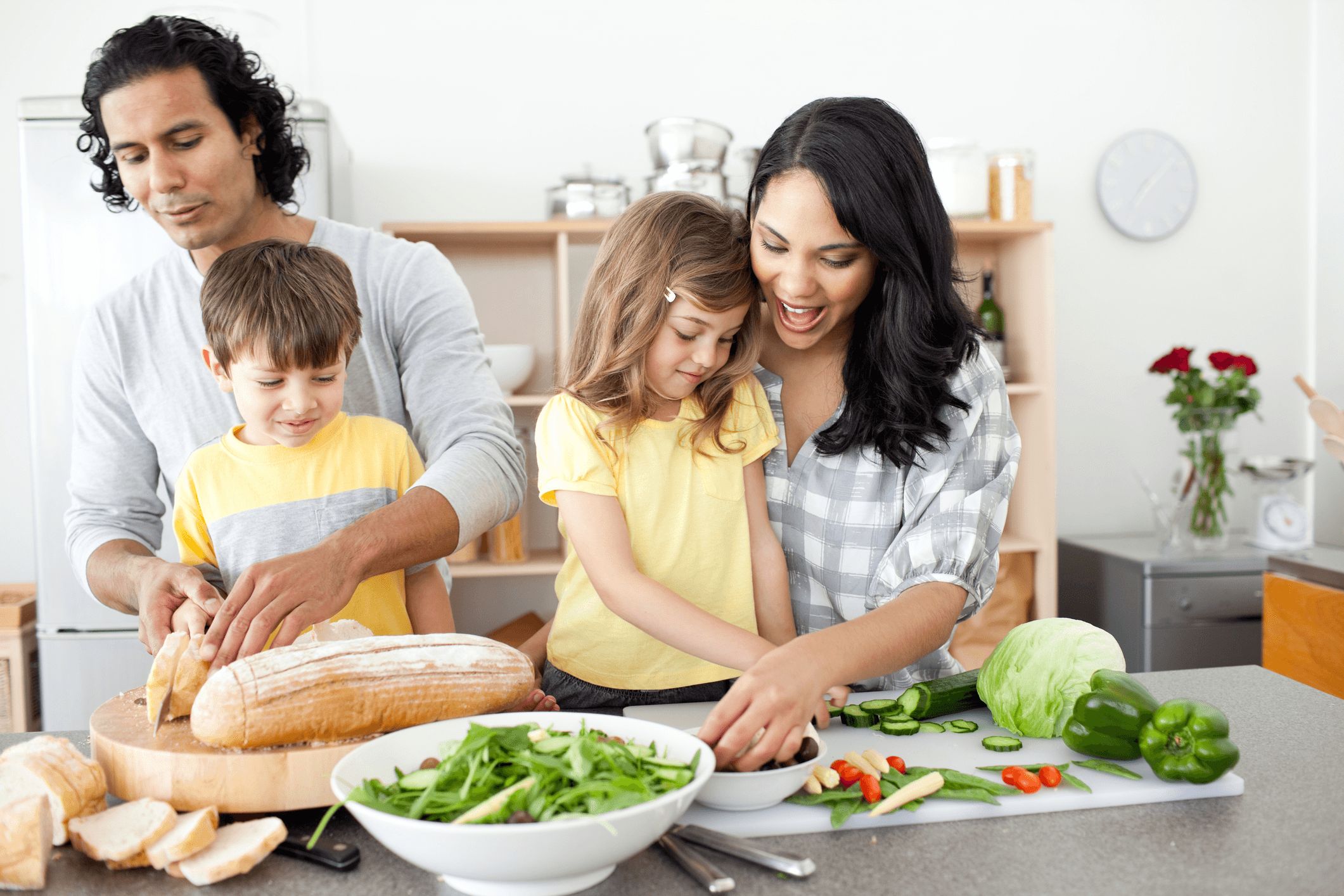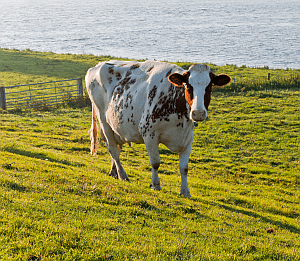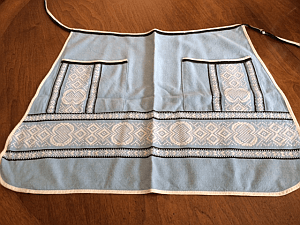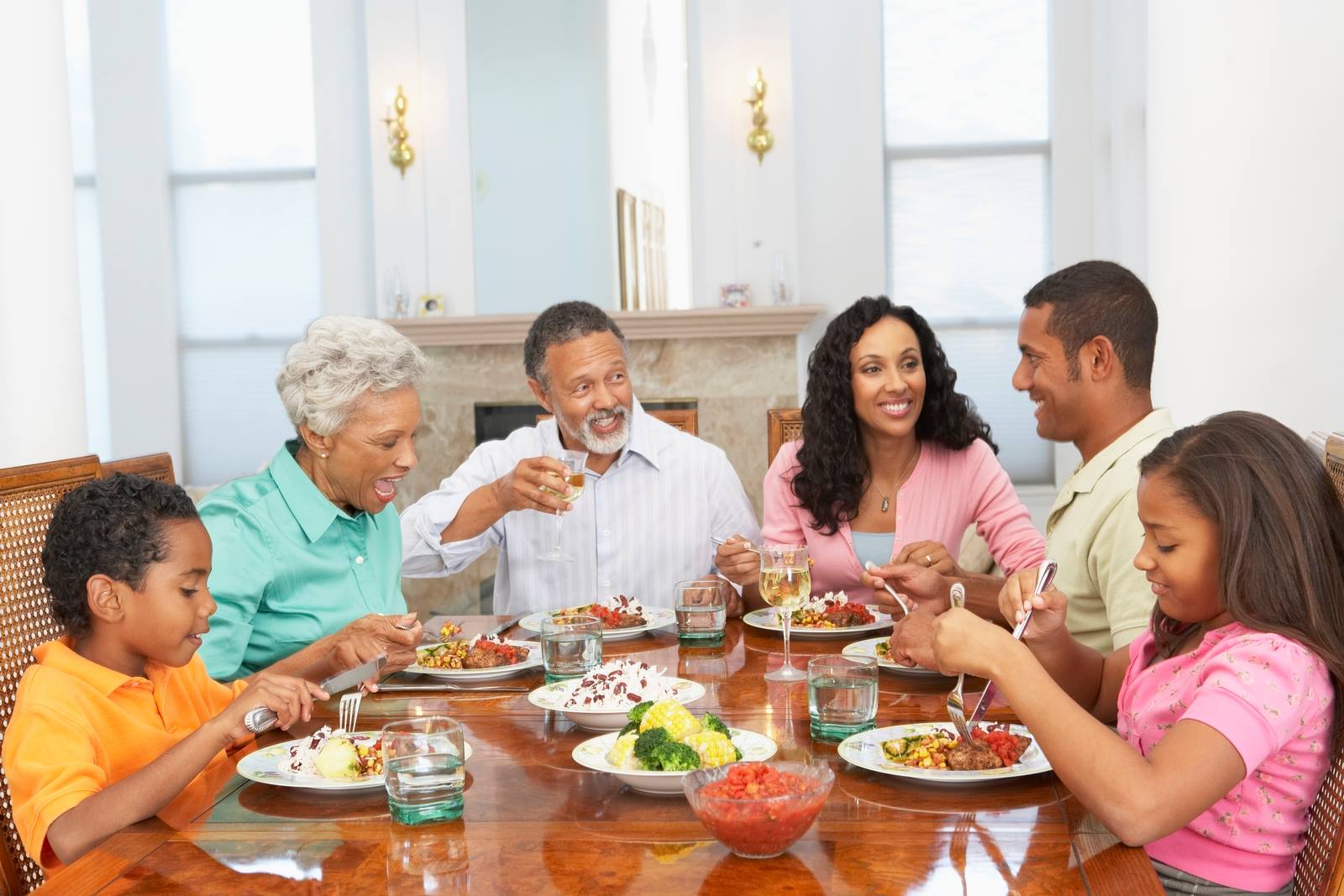Why it’s important to cook and eat with your kids will you ask me? Do we have the time, the luxury, the energy to do so in our over-stressed lives? And what if our family story could inspire you? I wrote this article with my daughter Camille, 22 years old. I wanted you, as parent or future parent, to hear the impact you (can) have on your children.
Véronique Cardon (the mother):
“As a child, I spent most of the holidays at my grandparents’ summerhouse in Normandy, France. This is the land of rainy days and green lush pastures. Normandy is known for its horse breeding farms, beautiful brown and white painted cows, and for its delicious cheeses named after Normandy villages such as Camembert, Pont L’Évêque, Livarot and more. This is also the region of the apple and its many incarnations. Needless to say, it is a land of good food and beautiful scenery.
I remember going to the farm next door with my little sister Muriel and bringing back milk in the old fashioned, now obsolete milk jugs and eating the eggs that we were getting right from the chicken coop. The summers were a mixture of beach time and endless swimming in the ocean, trapping crabs or harvesting mussels that we ate, biking for many hours back and forth to the sailing club, tennis courts and friends’ houses. How many calories did we burn as kids? It must have been phenomenal. There was no TV, no computers, a phone used only for emergencies. So all we did was MOVE. We were happy, healthy and skinny kids living a simple life.
My mother and grandmother were accomplished cooks, preparing and baking everything from scratch and with fresh ingredients. But I really learned cooking from my grandmother, as we spent almost 3 months non-stop there every summer. We ate everything – “No, I don’t like this and won’t eat it” was unacceptable. We had desserts on Sundays and they always remained a rare and exceptional treat.
Breakfast was basic. At lunch – always around the table- we had a salad, meat or fish and lots of fresh vegetables. Dessert was always yogurt or a piece of fruit. We had a 4PM snack at the beach, usually fruits, and dinner was very light, a soup most of the time. So all in all very few calories and small portions of high quality foods. My grandparents rented their meadow to local farmers, so we had cows, horses and sheep. We harvested the apples in the meadow and a local brewer transformed them in cider for our own consumption. We also had cherry trees, plum and apricot trees, strawberry patches, raspberry bushes, a vegetable and herb gardens. My grandfather raised rabbits that we petted and ended up eating! All of this to say, we ate local in the most honest sense of the word – almost everything we ate came from our backyard. An idyllic childhood will you say. I agree. But one that grew very strong bonds with nature, physical effort and family.
As it rained a lot, we were often trapped at home, with my grandmother cleaning, reading a book, sewing something or cooking. So my sister and I cooked with her. We found it funny and pleasurable to play with the dough. I remember squeezing it through my fingers. There were a lot of muscles required, because in the 60’s we had almost no magical cooking aids such as the Kitchen Aid – at least in our house. We mounted the egg whites with arm muscles; we peeled the apples; we grated the garden carrots; we got the peas out of the pods; we harvested the green beans and created everything from scratch.
We experimented, participated and while doing so learned all of my grandmother’s art and tricks. When the final product came out of the oven, we were all ooohs and aaahs. We had all cooked this together and it was a family accomplishment. I remember how we would invent recipes, like “the Muriel’s caramel pot” or “the Véronique’s grated celery and carrot salad”. Even today, after more than 45 years, I can still picture my grandmother with her apron – I still have it – running in the kitchen because the farm milk was boiling and spilling over. She was always doing twenty different things at the same time, and I have inherited this trait from her.
She was a very intuitive and creative cook, always adding a “je ne sais quoi” to her recipes. She made the best vinaigrettes. It is one of my specialties at home as well. Because of the war, she had been raised in a culture where nothing could ever be spoiled. So she added the left over green beans from yesterday in the vegetable medley of today, or improvised new recipes based on what was in the fridge. She was also using herbs a lot and we learned to appreciate and cook with rosemary, thyme, mint, chives, parsley etc. We learned not by reading a recipe, but by trusting our instinct, experimenting and trying new things with her.
I have been a rather busy mother, with a high demanding corporate job and tremendous traveling schedule when my two daughters Pauline (now 26) and Camille (now 22) were young. But we always cooked breakfast and dinner at home. When we moved to the United States, my husband Paul decided to stay at home for a while because we wanted our kids to always have a parent with them. So he gets a lot of credit for having taught our daughters how to cook and so much more.
The dinner table is sacred in our family as a pillar of education. Even coming back late from work, everybody has always been waiting for me, so we could eat together. Being around the table and sharing food is still yet the best, most consistent and proven way to connect and communicate with your kids – avoid smart phones, broach tough topics, model great eating behaviors and share healthy food and love with them! You will reap an amazing ROI as educators. Eating together goes way beyond just sharing food together.
We are a cooking family and everybody has a specialty. We cook well in pairs but not in trios – too many chefs in the kitchen. We try to cook almost everything from scratch and with fresh ingredients. All I can say is that when we cook together we share love and precious moments. We create something together and we build souvenirs.”
Camille (the daughter):
“I learned to cook, not from my grandmother, but from my parents. There are a lot of things I could say about learning to cook with my father – how it brought us closer together, smoothing over the bumps in our relationship, or how it taught me to be independent and take care of myself after leaving home. I could also say many things about learning to bake from my mother; she taught me her best chocolate mousse recipe, and still masters many things I cannot. Despite being the busiest person I know, I still look forward to when she is cooking dinner – it’s guaranteed to be healthy and very delicious.
It was always about more than learning how to cook, though. It was about spending time together, creating something we could enjoy as a family.
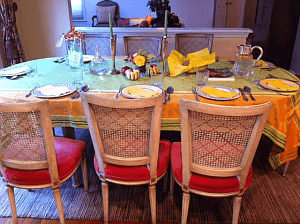
My memories are different than my mother’s; I didn’t grow up in a time with farm-fresh milk and eggs still warm from the hen. Rather, my memories are about sitting around a table, just the four of us, sharing our days and spending that time together every night. Family dinner was, and still is, mandatory, and I have a great appreciation for that – it meant that no matter how busy we were, we always took time out of our days to eat a great meal and share a conversation. As a small expatriate family of four in the US, far from our extended family in Europe, this was an important way to stay tethered together despite the myriad demands on our time. My memories are about watching my mother make a perfect meringue effortlessly and trying to recreate it (spoiler alert: I still can’t).
Despite not having lived at home for the past four years, I still call my parents for recipes and advice, frequently texting my father in a panic about something I’m making. I’m still learning how to cook, and I think I will continue learning until the day I die. My ability and willingness to learn and engage with the food I’m creating and eating, however, has been instilled in me since I was young, and for this I will forever be appreciative. You may call me a food snob, I just call me Paul and Veronique’s daughter.”
Véronique:
“Cooking is a love affair with life. Cooking is a gift we must share. My grandmother would be proud – I still wear her apron. I feel her love from above when I cook. Cooking fresh ingredients, from scratch, is like building an ephemeral piece of art that we can all share afterwards. Vegetables and fruits are a miracle of nature that has been given to us. They nourish us with vital elements and the love that went into growing and preparing them. That’s why I am a facilitator for The Suppers Programs. 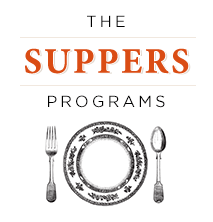
I am proud to say that my two daughters, one being a busy young advertising executive in NYC and the other one a student in medical school are both cooking regularly! And they are asking crock pots, Kitchen Aid mixers and pots and pans as birthday gifts!”
Véronique and Camille, Princeton, NJ, September 2014 – revisited August 2015
Véronique Cardon is on the Board of Trustees and is a facilitator for The Suppers Programs and is the founder of The CogniDiet Weight Loss Programs. Camille is a medical student at The Royal College of Surgeons in Dublin, Ireland.
